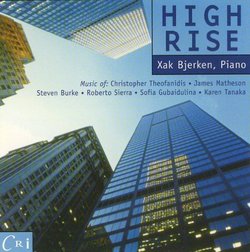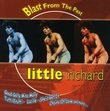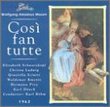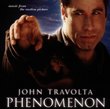| All Artists: Xak Bjerken Title: Xak Bjerken: High Rise - Recent and Modern Piano Works - Christopher Theofanidis: Statues, 5 episodes for piano / James Matheson: Pound / Karen Tanaka: Crystalline II / Roberto Sierra: Piezas Imaginarias / Steven Burke: One / Gubaydulina: Chaconne Members Wishing: 0 Total Copies: 0 Label: Composers Recordings Release Date: 1/23/2001 Album Type: Import Genre: Classical Styles: Chamber Music, Historical Periods, Classical (c.1770-1830) Number of Discs: 1 SwapaCD Credits: 1 UPC: 090438085526 |
Search - Xak Bjerken :: Xak Bjerken: High Rise - Recent and Modern Piano Works - Christopher Theofanidis: Statues, 5 episodes for piano / James Matheson: Pound / Karen Tanaka: Crystalline II / Roberto Sierra: Piezas Imaginarias / Steven Burke: One / Gubaydulina: Chaconne
 | Xak Bjerken Xak Bjerken: High Rise - Recent and Modern Piano Works - Christopher Theofanidis: Statues, 5 episodes for piano / James Matheson: Pound / Karen Tanaka: Crystalline II / Roberto Sierra: Piezas Imaginarias / Steven Burke: One / Gubaydulina: Chaconne Genre: Classical
Pianist Xak Bjerken plays the works of contemporary composers. |
Larger Image |
CD DetailsSynopsis
Product Description Pianist Xak Bjerken plays the works of contemporary composers. Similar CDs
|
CD ReviewsExciting New Works by a Gifted Pianist 05/16/2001 (5 out of 5 stars) "It's always refreshing to see musicians committed to bringing us new pieces instead of just recycling the same old classics. Mr. Bjerken has chosen a wonderful variety of compositions - they're all good, and I particularly like those by James Matheson and Sofia Gubaidulina. Mr. Bjerken's playing is remarkably expressive and commanding - I know of few other pianists who have so much power and yet also provide such a delicate touch when needed. The CD is acoustically detailed, spacious, and balanced. This is the first disc I've bought on the CRI label, and it certainly won't be the last." Inspiring new music 03/11/2001 (5 out of 5 stars) "It is inspiring to hear such original and exciting new music. Xak Bjerken's playing is exceptional. It is comforting to know how much talent there is among composers today. The works on this CD are highly polished. I particularly liked the works by Chris Theofanidis and James Matheson." FYI from the liner notes Diane E. Declue | 06/08/2007 (5 out of 5 stars) "FROM THE LINER NOTES
HIGH RISE Why "High Rise?" I imagine many have spent an evening drinking with friends, trying to come up with an appropriate name for something. That evening for me produced such win-ners as "I Leave the Lid Up," "Does Not Play Well With Others" and the like. I certainly did not have a sexy theme, but I felt that the contrasting styles and nationalities (Tartar, French-Japanese, Puerto Rican, etc.) worked well side by side. The works do not complement each other in the conventional sense, but hold and engage us with their unique characters, and the image of the city high rise full of separate, bustling lives seemed good. This recording is a tribute to the vitality of the composer-performer interaction--one that has provided me with enormous regenerative energy in the last few years. --Xak Bjerken Christopher Theofanidis (b 1967) was born in Dallas, Texas, and holds degrees from Yale, the Eastman School of Music and the University of Houston. He is the recipient of the Rome Prize, the Barlow Prize, a Guggenheim Fellowship, the Charles Ives Fellowship from the American Academy of Arts and Letters, the Columbia Bearns Prize and six ASCAP Morton Gould prizes. He has received commissions from the Brooklyn Philharmonic, the Houston Symphony, the National Symphony, the Orchestre Philharmonique de Monte-Carlo, Speculum Musicae, the Absolute Ensemble, and the Cassatt and Muir String quartets. He has served as composer-in-residence for the California Symphony and the Norfolk Chamber Music Festival. Theofanidis currently is writing a work for Kim Kashkashian and the Pro Arte Chamber Orch-estra. He teaches at the Peabody Conservatory in Baltimore and the Juilliard School in New York. He also is a member of the summer faculty for the American Festival for the Arts. Statues Statues (1992) is a set of five miniatures for piano which grew out of improvisations. On my mind at the time was the idea that a statue contains some kind of frozen energy--an expres-sion or a motion, which, white static, is somehow alive. Each movement has a single, non-developmental motif which is pregnant with an energy but cannot transcend its initial effect or state. This work was written in tribute to Claude Caux, a family friend who tragically took his own life in 1992. The first movement, "Partial Symmetries," is built on a belt-like sonority which creates open and suspended resonances. The openness of pitch space creates three distinct registers and establishes the work's solemn mood. The second movement, "Eros," is built on a virtuosic, cross-handed gesture which is circular in sound. It has a running quality which continues unabated until the movement's end, at which point the gesture is isolated in a kind of stasis. The third, "Unstuck Sound," is very terse. The right hand holds a chord and adds and subtracts notes from that chord as the Left hand lays spiky, registrally extreme gestures around it. The fourth movement, "Visigoth," is utterly barbaric in its physicality and force, and its central gesture, though hammer-like in character, has at its core a bright harmony, creating a conflict of intent between a more sweet harmonic palette and more jarring rhythmic base. This tension reaches a crisis which remains unresolved. The fifth movement, "Bard," has a lyrical and noble melody which borrows the bell-like rhythm from the first movement. This tune is set against a dreamy, drone-like accompaniment in the left hand, rocking away gently into nothingness. --Chris Theofanidis James Matheson's principal composition teachers have included Steven Stucky, Roberto Sierra, Gerald Levinson, Martin Bresnick and Jacob Druckman. After receiving a bachelor's degree in music and philosophy from Swarthmore College in 1992, he continued his studies at Cornell University, where he received his master's degree in 1997, and where he is in the final stages of a doctoral program in composition. In addition to his work as a composer, Matheson has taught at Hartwick College, Binghamton University and the Ithaca College School of Music. Matheson's music has been heard throughout the United States and abroad, including performances by Orchestra 2001, by the Cornell Festival Chamber Orchestra, and at the Bowl-ing Green, Aspen and Norfolk music festivals. He has been the recipient of several awards including fellowships from the Guggenheim Foundation and the Aspen Music Festival, and ASCAP Morton Gould Young Composers' awards for his orchestral work Gliss and violin concerto Sleep. Falling, a piano trio, was written for the chamber music series of the Chicago Symphony Orchestra and premiered in June of 2000, and Gliss was selected by the American Composers Orchestra for the 2000 Whittaker New Music Reading Sessions. Pound The first movement of Pound is meant to suggest the illusion of two pianos through the use of two simultaneous layers of music. The first of these layers is a simple pulse which begins with one note and builds to massive chords by the conclusion of the movement. The second layer is both more rhythmically complex and more melodic. The overall shape of the first movement is that of an outwardly expanding wedge. The second movement is somewhat more traditional in its construction. At the outset, a repeating ostinato in the bass accompanies a simple tune in the treble. This combination of melody and accompaniment undergoes numerous transformations, eventually leading to a rhythmically driving climactic passage. A brief allusion to the opening of the movement brings it to a dramatic end. The final movement is comprised of three basic sections. The first juxtaposes two ideas--sharply articulated chords at the outer extremes of the instrument, and dense, outwardly expanding chords toward the middle. These ideas alternate, gaining in momentum, and lead to a second, rhythmically lopsided but more lyrical section. This, too, gains in intensity and leads to a final section, closely related to the first, but more explosive in character. Pound was premiered by Xak Bjerken. --Jim Matheson Karen Tanaka (b 1961, Tokyo) began piano lessons when she was four years old and formal composition lessons at the age of ten. After studying composition with Akira Miyoshi at Toho Gakuen School of Music, she moved to Paris in 1986 to study with Tristan Murail and to intern at IRCAM. She studied composition with Luciano Berio in Florence in 1990-91. She has received several major awards including prizes at the Viotti and Trieste competitions, the Japan Symphony Foundation Award and the Gaudeamus Prize. She has been co-artistic director of the Yatsugatake Kogen Music Festival, previously directed by T?ru Takemitsu. Tanaka's catalogue includes orchestral, chamber and solo instrumental works, with and without electronics. Her recent works, such as The Song of Songs, Night Bird and Metal Strings, use the latest technology and reflect different aspects of contemporary culture. Tanaka's love of nature and concern for the environment has influenced many of her works, including Frozen Horizon, Water and Stone and the tap piece Questions of Nature. Forthcoming commissions include works for the BBC Symphony Orchestra and the NHK Symphony Orchestra. She lives in Paris. Crystalline II Since I composed Crystalline for solo piano in 1988, I have desired to project the image of crystals in sounds and space. Crystalline II (1995-96), Hommage en cristal (1991), Metallic Crystal (1994-95) and Crystalline III (2000) are linked to this earlier piece, in which a glassy, solid, yet trans-parent sound suggests cold, crystal sound sculptures. --Karen Tanaka In recent years the music of Roberto Sierra has received much attention and has met with particular acclaim in North America and Europe. Born in Puerto Rico, Sierra came to prominence in 1987 when his first major orchestral composition, Júbilo, was performed at Carnegie Hall by the Milwaukee Symphony Orchestra. His works have since been performed by the major orchestras of North America, as well as by the American Composers Orchestra, the New York Philharmonic, the National Symphony Orchestra, the Kronos Quartet, Continuum, England's BBC Symphony, and at Wolf Trap, the Santa Fe Chamber Music Festival, Festival Casals, France's Festival de Lille and others. Recent commissions include Con madera, metal y cuero for Evelyn Glennie, commissioned by the Los Angeles Philharmonic, the Royal Scottish National Orchestra and the Casals Festival as part of the BBC's 20th Century Retrospective "Sounding the Century"; Fanfarría, aria y movimiento perpetuo for violin and piano commissioned by the Library of Congress to celebrate Copland's centennial; and Concerto for Orchestra for the centennial celebrations of the Philadelphia Orchestra commissioned by the Koussevitzky Music Foundation and the Philadelphia Orchestra. Sierra pursued early studies at the Puerto Rico Conservatory of Music (of which he later became chancellor) and the University of Puerto Rico. He later continued his studies in Europe at the Royal College of Music, the University of London, the Institute for Sonology in Utrecht, and did advanced work in composition at the Hochschule für Musik in Hamburg under György Ligeti. He currently teaches composition at Cornell University. Piezas Imaginarias The title Imaginary Pieces refers to the fact that each one of the pieces was created in its entirety in an abstract imaginary space before writing them in musical notation. Extreme dynamics are used not to convey coloristic effects, but rather to work as an important element of the harmonic components (pieces 1, 2, 8, 9) and to sculpt complex polyphonic textures (pieces 5, 6, 7). The natural resonance of the piano is used in pieces 1, 2, 6, 8 and 9 to produce secondary sonorities that create complex harmonies in conjunction with notes played on the keyboard. In pieces 3, 4 and 5, a single melodic strand gets out of sync with itself, creating canonic structures; in Nos. 6 and 7, the canonic structures are created by means of imitating a line at different speed. The last piece consists of a single strand that constantly expands and contracts its intervallic structure. Imaginary Pieces were premiered by Xak Bjerken. --Roberto Sierra Steven Burke was cited recently by the American Academy of Arts and Letters as a composer who has that rarest of inventive gifts, a personal voice. Burke began studying com-position relatively late in his life. In college, he divided his time as a musician and scientist. He taught college chemistry as a sophomore and was involved with neurosurgery research at New York University Medical Center. Ironically, it was nerve damage that forced him to abandon trumpet, which he had played since age seven, and start composing at the age of twenty. Since then, he has pursued composition exclusively. Burke holds degrees from Sarah Lawrence College, the University of Wisconsin at Madison, Yale University and is a DMA candidate at Cornell University. He has studied with Jacob Druckman, Steven Stucky, Roberto Sierra, Martin Bresnick, Lukas Foss and Donald Erb. Among Burke's recent honors are a Guggenheim Fellowship, the Charles Ives Fellowship from the American Academy of Arts and Letters, fellowships from Yaddo and the MacDowell Colony, the Robbins Prize, a Presser Foundation Scholarship, and the Morton Gould Young Composer Award from the American Society for Composers, Authors and Publishers (ASCAP). Burke has been commissioned by Yaddo and the Orpheus Chamber Orchestra for a work to commemorate the centen-nial of Yaddo, and by the Seattle Symphony and the ASCAP Foundation for a work, Clockwise, in memory of Jacob Druckman, which was premiered in 1998 to critical acclaim. One I composed One for my dear friend Xak Bjerken. I set out to create a work that would challenge his expressive sensitivity, and in the process I produced a piece which marked the beginning of a new phase in my musical vocabulary. One is guided by the idea of building waves. Starting from a single note, it expands outward by simultaneous scales, both ascending and descending. The structure also grows in speed and dynamics, and new motives emerge as the music unfolds with variations on the central dotted rhythm. The whole piece is organically spun out, reaching a tidal climax at the end. --Steven Burke Sofia Gubaidulina was born in the Tatar Republic of the Soviet Union in 1931. After instruction in piano and compo-sition at the Kazan Conservatory, she studied composition with Nikolai Peyko at the Moscow Conservatory, pursuing graduate studies there under Vissarion Shebalin. She lived in Moscow until 1992 and has since made her primary residence in Germany. Gubaidulina's compositional interests have been stimulated by the tactile exploration and improvisation with rare Russian, Caucasian, and Asian folk and ritual instruments collected by the Astreia ensemble, of which she was a cofounder, by the personalization of contemporary Western musical techniques, and by a deep-rooted belief in the mystical properties of music. Her uncompromising dedication to a singular vision did not endear her to the Soviet musical establishment, but her music was championed in Russia by a number of devoted performers including Vladimir Tonkha, Friedrich Lips, Mark Pekarsky and Valery Popov. The determined advocacy of Gidon Kremer, dedicatee of Gubaidulina's violin concerto Offertorium, helped bring the composer to international attention in the early 1980s. First allowed to travel to the West in 1985, Gubaidulina has since been the recipient of commissions from the Library of Congress, the Chicago Symphony Orchestra, the New York Philharmonic, the Kronos Quartet, Ursula Oppens, and the Berlin, Helsinki and Holland festivals. Her most recent awards include the prestigious Praemium Imperiale in Japan and the Sonning Prize in Denmark. Gubaidulina has been honored twice with the coveted Koussevitzky International Recording Award. Chaconne I played Gubaidulina's Chaconne for her at the Tanglewood Music Center up in the hot attic studio of my teacher, Leon Fleisher. Gubaidulina spoke not a word of English, but her fierce, focused intensity as she leaned over me, demonstrating at the keyboard, was thrilling. She spoke of the sudden shifts in the character of the variations being like the two sides of a face with totally different expressions--a turn of the head surprises you. While the work is an early one for her, written just after her studies at the Moscow Conservatory, she is masterful in her use of the rhythmic vitality of the seventeenth-century dance that is its model. The brilliance of the piece comes from the variety of styles, from steely, Prokofiev-like virtuosity to ecstatic, floating cantilena. In the end, the bold, stomping energy of the theme's return disintegrates into the dark, murky recesses of the piano. --Xak Bjerken" |

 Track Listings (21) - Disc #1
Track Listings (21) - Disc #1


